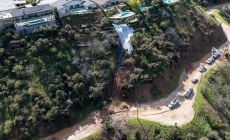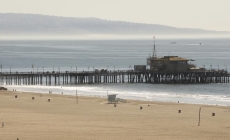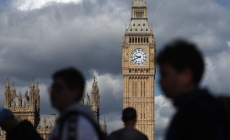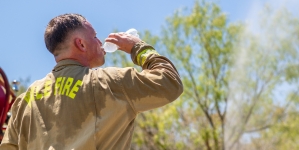-
Dead Baby Sea Lions Suddenly Found on California Islands Spark Concerns - May 25, 2024
-
A portion of Mulholland Drive, damaged by mudslides in winter storms, reopens - May 26, 2024
-
‘Maybe You Don’t Want to Win’ - May 26, 2024
-
Donald Trump Putting Law Enforcement in Danger: Attorney - May 26, 2024
-
Avoid the waters of these 5 L.A. County beaches this holiday weekend, public health officials say - May 26, 2024
-
Bawdy Comedy ‘Anora’ Wins Palme d’Or at Cannes Film Festival - May 26, 2024
-
Map Shows Heat Wave Zone Spread Into Five New States - May 26, 2024
-
Azusa police arrest suspected slingshot-wielding vandal - May 25, 2024
-
Donald Trump Hammers Judge Ahead of Jury Instructions - May 25, 2024
-
Sometimes U.S. and U.K. Politics Seem in Lock Step. Not This Year. - May 25, 2024
Dead Baby Sea Lions Suddenly Found on California Islands Spark Concerns
Hundreds of dead baby sea lions discovered on California islands have grabbed the attention and concern of local researchers.
According to a report by the Los Angeles Times on Thursday, Patrick Robinson, director at the University of California Santa Cruz Año Nuevo Reserve, said it is not uncommon to see “some” dead baby sea lions around this time of year; however, he said the number observed this month is “alarming.”
California sea lions live in coastal waters and feed predominantly offshore, according to the National Oceanic and Atmospheric Administration (NOAA) Fisheries, which added that the sea lions are native to the West Coast of North America and protected under the Marine Mammal Protection Act.
In the Times report, Robinson notes that peak birthing time for the sea lions is still weeks away, making the number of dead baby sea lions recently observed all the more concerning.

In an emailed response to Newsweek on Friday, Robinson sent his findings on the “mortality event,” saying that on May 7, he did an incomplete count and found 50 “still-born California sea lion pups at UC Santa Cruz’s Año Nuevo Reserve.” Robinson noted this as “unusual.”
In her research, Megan Moriarty, veterinarian at UC Santa Cruz, said: “In a typical year, one might expect to see 5 to 10, but we have now counted 250-300 dead sea lion pups on the island.” Moriarty also noted that similar “widespread” dead baby sea lions have been spotted in the Channel Islands, adding that this location “is a crucial nursery area” for the species.
A permitted aerial survey was also conducted on May 14, as noted in Robinson’s findings, and necropsies were performed May 16 on the bodies of several still-born baby sea lions.
“The cause and impact of these mortalities remains unknown,” Moriarty said in her summary on Wednesday.
In an emailed statement to Newsweek on Friday, NOAA Fisheries said that the agency and its associates are “tracking initial reports from biologists that some sea lion pups at California sea lion rookeries died prematurely this year. Premature births are not uncommon with sea lions and often become numerous during El Niño periods when pregnant sea lions need to swim farther in search of shifting prey species.”
NOAA Fisheries continued: “This can leave them malnourished, leading to premature births of their pups. The recent El Niño pattern that affected the Pacific Ocean last fall and winter may help explain the observed increase in premature births so far this year. However, we will not know if the number of premature births exceeds the typical range until research teams complete their regular annual surveys of sea lion rookeries in the Channel Islands and other areas in the coming weeks. So far this year, there are no signs of widespread disease (including domoic acid) or other factors affecting the sea lion population as a whole. The California sea lion population is healthy, with about 250,000 individuals. The West Coast Marine Mammal Stranding Network is preparing for additional strandings as the summer season approaches.”
Robison also noted in his email to Newsweek that, overall, the California sea lion population is “doing very well,” even saying the population is “perhaps approaching the carrying-capacity.”
A large number of sea lions were found dead last year in South America, with the deaths tied to the bird flu.
Uncommon Knowledge
Newsweek is committed to challenging conventional wisdom and finding connections in the search for common ground.
Newsweek is committed to challenging conventional wisdom and finding connections in the search for common ground.
Source link































